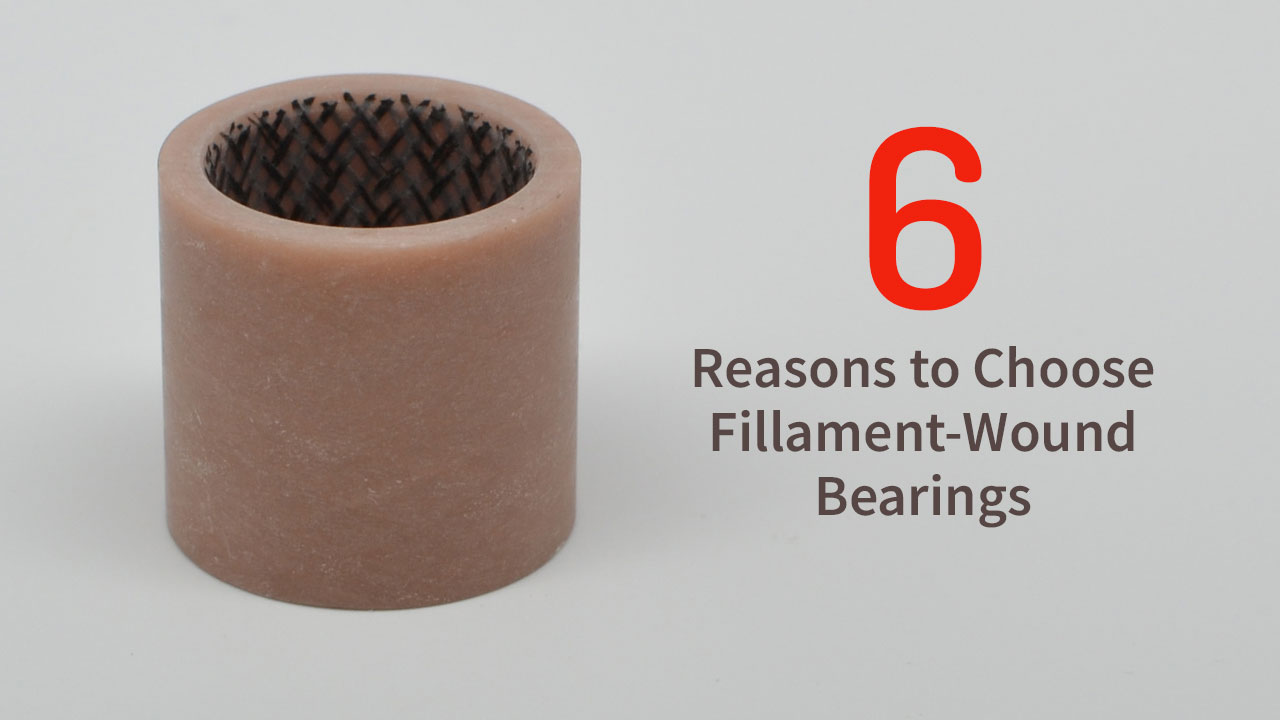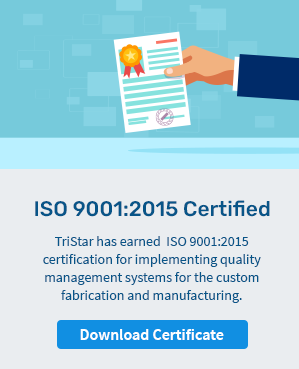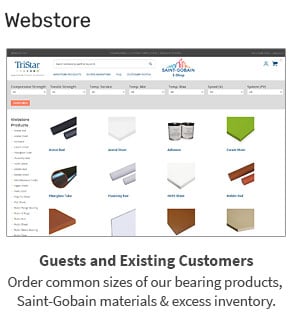
Looking for a tough, durable and maintenance-free versatile bearing for demanding industrial applications? A filament wound composite bearing might be exactly what you need. These advanced components offer superior strength, reliability, and versatility across industries like construction, mining, transportation, and marine equipment.
Let’s explore the top six reasons to consider filament wound composite bearings for your next application—and why Tristar’s CJ® and FCJ® product lines continue to lead the industry.
What is a Filament?
A filament is defined as a conducting thread or wire with a high melting point. Filaments are often used in electrical or vacuum tube systems where it’s heated to produce current.
In the context of composite bearings, the term takes on new meaning. Here, filament threads of fiberglass, PTFE, or other reinforced fibers are wound in a precise helical pattern to form the bearing wall. This technique increases tensile strength, flexibility, and dimensional stability.
In Tristar’s CJ (Composite Journal) bearing, the liners are made of PTFE, Nomex®, and polyester fibers woven into a seamless sock. These are then intertwined with glass filaments to produce a reinforced, multilayer composite that delivers:
- High load capacity
- Dimensional stability under stress
- Vibration absorption
- Maintenance-free, self-lubricating performance
Each CJ bearing is wound on precision mandrels with preset inner diameters, ensuring consistency and tight manufacturing tolerances.
Expert Note from Tristar: The filament winding process is what truly sets composite bearings apart. Unlike injection-molded or sintered metal bushings, filament wound composites distribute load through multiple fiber orientations, giving them a unique combination of rigidity and resilience. This allows consistent performance even in high-impact, dirty, or abrasive environments where metal bearings would fail.
The Top 6 Benefits of Filament Wound Composite Bearings
1. Elastic Modulus: The Perfect Balance Between Strength and Flexibility
Filament wound bearings offer a modulus of elasticity that sits between rigid metals and soft plastics. This balance gives them the ability to support heavy static and dynamic loads while maintaining enough flexibility to tolerate minor shaft misalignments without damage.
The result is bearings that maintain clearance and alignment over long cycles; ideal for construction, agricultural, and industrial systems where vibration and load shifts are constant.
In applications like excavator arms, wind turbine pitch controls, or suspension pivots, this natural elasticity protects against edge loading and shaft scoring which extends bearing and equipment lifespan.
2. Superior Shock Absorption
A composite filament wall acts like a spring, absorbing impact and vibration in high-stress environments. Even thin-walled CJ bearings can compress and recover during impact without structural failure.
This inherent damping characteristic helps protect both the bearing and surrounding components, leading to smoother operation and reduced noise.
Expert Note from Tristar: We’ve seen customers in rail systems and heavy equipment extend component life significantly after replacing rigid metal bushings with filament wound composites, which absorb shock instead of transmitting it.
3. Corrosion Resistance
Filament wound composite bearings are naturally resistant to chemical attack, galvanic corrosion, and fretting wear, which are all leading causes of failure in metal bearings.
Because these bearings are built with synthetic resins and glass or aramid fibers, they perform reliably in wet, chemical, or outdoor conditions where steel or bronze bushings would oxidize or seize.
Applications:
- Marine environments
- Mining equipment
- Oilfield machinery
- Food and agricultural processing
4. Motion Versatility
Filament wound CJ® and FCJ® bearings excel in oscillating, rotary, and linear motions, operating smoothly without external lubrication.
They’re ideal for applications with variable frequencies, uneven load distribution, or multidirectional motion; conditions that often cause rapid wear in metal or bronze bearings.
Expert Note from Tristar: Tristar’s composite bearings maintain consistent friction coefficients across varying speeds and temperatures. That means no stick-slip, no chatter, and no lubrication maintenance. Just clean, predictable movement.
5. Extended Service Lifetime
When used with hard shafts (50–55 Rc) and smooth finishes (8–16 RMS), filament wound composites deliver exceptional longevity.
One Tristar test showed that improving shaft surface finish from standard tolerance to 8 RMS extended wear life from 500,000 to over 1,000,000 cycles without any lubrication.
This means fewer replacements, lower operating costs, and less downtime. The right finish dramatically improves wear performance, doubling or even tripling bearing life in demanding environments.
6. Self-Lubricating Qualities
Composite bearings are completely grease-free. They integrate PTFE or graphite lubricants within their resin matrix, providing continuous dry lubrication and eliminating the need for manual greasing or oiling.
Benefits:
- No contamination from excess grease
- Lower maintenance costs
- Cleaner operations ideal for food, packaging, and construction equipment
Expert Note from Tristar: Self-lubrication isn’t just about convenience, it’s about reliability. Tristar’s composite bearings maintain a consistent lubrication film that prevents friction spikes, even under heavy loads or extended duty cycles. This makes them ideal replacements for bronze bushings in high-dust or hard-to-reach installations.
Filament Wound Bearings as Bronze Replacements
Filament wound composites work exceptionally well as a bronze bushing replacement in applications including transportation, construction, mining and more. For best results, we also recommend that you look for bearings that are designed and manufactured in the US. Ask us for details.
For a general primer in the different types of bearings, how they fail, and bearing selection strategies, check out our Bearings 101 feature article.









